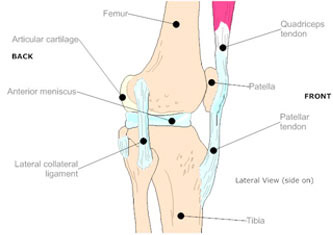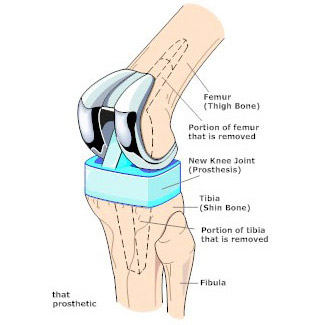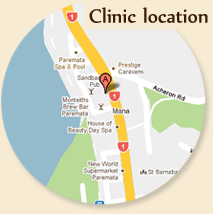Ankle Arthroscopy procedure - Mr Nigel Willis
Introduction
This information, compiled by Nigel Willis, is designed to ensure that you understand what is involved with your upcoming ankle arthroscopy surgery and what to expect before, during and after the procedure. Understanding and following these instructions is paramount in order to maximise the benefits of surgery. Mr Willis, physiotherapists and nurses will help further educate you on all matters relating to the procedure.
There are potential complications that may occur during or after ankle arthroscopy surgery, however Mr Willis will inform you about these prior to you agreeing to undergo the procedure. Being an elective procedure means that you can choose not to have it performed if you are not willing to accept the risks involved. Rather than undergoing surgery, you may choose to continue with conservative (non-operative) treatment of your condition.
-
What is ankle arthroscopy?
Ankle arthroscopy surgery
Arthroscopic surgery is sometimes referred to as “keyhole surgery” as it is performed through very small incisions.
The major advantages of arthroscopic surgery of the ankle are that it is associated with a faster recovery due to less pain and earlier mobilisation of the ankle than after conventional open surgery. Ankle arthroscopy allows direct visualisation of the ankle joint surface. The surgery is performed as a day surgery procedure.
Reasons for ankle arthroscopy
Not all causes of ankle pain can be effectively treated with an arthroscopic procedure. Ankle arthroscopy is the technique of choice for treatment of the following:
Cartilage Damage
Small, isolated areas of cartilage damage (not widespread ankle arthritis) is a commonly found in people who have sustained injuries to the ankle joint. In fact, cartilage damage is estimated to occur in about 5% of people who sustain a sprained ankle. Left untreated, these cartilage areas may lead to the development of generalized arthritis of the joint.
Ankle arthroscopy is often used to assess these areas of cartilage damage and try to restore the normal cartilage surface to the joint. Restoring a cartilage surface can be accomplished by either repairing the damaged cartilage, or by trying to stimulate new cartilage growth with a micro-fracture, cartilage transfer, or chondrocyte implantation procedure.
Removing Bone Spurs
Bone spurs can form in the front of the ankle joint, causing the ankle to pinch when the foot is pushed all the way up towards the shin. This condition, properly termed anterior ankle impingement syndrome, has also been called athlete's ankle or footballer's ankle. Ankle arthroscopy can be used to shave down the bone spur on the front of the joint, to allow for improved motion of the ankle joint.
Removing Loose Debris/Scar Tissue
Ankle arthroscopy can be helpful whenever there is a condition causing the accumulation of loose debris or scar tissue within the ankle joint. Removing debris or scar tissue may be helpful in restoring motion and decreasing swelling and pain inside the joint. Treatment of Posterior Ankle Pain.
Pain in the back of the ankle can sometimes be treated arthroscopically. While there is limited space to perform an arthroscopic procedure in the back of the ankle, there are some conditions that can be helped when people have posterior ankle pain. Certain types of tendonitis and some bone spurs in the back of the ankle may be treated arthroscopically.
Alternatives to surgery
Being elective surgery means it is your decision as to whether you have surgery. You may continue with a non-operative line of treatment for your condition. This approach can involve:
- 1. Resting the ankle.
- 2. Analgesics and anti-inflammatory medication.
- 3. The use of pressure bandages, walking sticks or crutches.
- 4. Injections in the joint with cortisone based medication.
- 5. Making use of the allied health fields such as physiotherapy and massage.
-
What happens prior to surgery?
You should continue to take all of your normal medication. If you are on the oral contraceptive then you should stop taking this one week before surgery.
-
The surgical procedure
This is generally a one-day procedure, meaning patients should expect to be admitted and discharged on the same day.
The surgery involves making 2 - 4 small incisions over the front of the ankle to gain access to the ankle joint. Both soft tissue and bone can be operated on.
Local anaesthetic is injected into the ankle joint and around the portals. This usually provides good pain relief for up to 12 hours after the operation. Immediately after surgery a bulky dressing is applied. This should remain in place for 5 days. During this time the dressing should be kept dry. You will have either a boot or plaster on your leg. Crutches will be provided if required, however you may walk on the leg following surgery. It is recommended that your leg is elevated as much as possible to help reduce the swelling.
Surgical Outcomes
The outcomes of surgery relate to the goals that both surgeon and patient hope to achieve. Most people find that their symptoms are improved following an arthroscopy. Some people feel that their symptoms are no different. In a small number of cases people find their symptoms to be worse after an arthroscopy.
There are a number of objectives that surgeons endeavour to achieve when performing an ankle arthroscopy. These include:
- 1. Reduction in pain in the ankle joint.
- 2. Improvement in the function of your ankle.
- 3. Assessment of your ankle pathology.
-
Risks & complications of the procedure
The vast majority of patients following ankle arthroscopy suffer no complications. Complications that may occur include:
Parasthesia
This is numbness affecting the skin and occurs as a result of injury (bruising or division) of branches of, or the actual, cutaneous nerves. It occurs because the safe 'corridors' allowing access into the ankle, away from the vital structures, lie close to these nerves.
Superficial Wound Infection
You will receive pre-operative antibiotics which minimise the risk of this complication.
Deep Joint Infection
You will be provided with pre-operative antibiotics and the operation is carried out in a laminar flow theatre (the same degree of sterility as is used for open joint replacement) which will minimise the chances of complication.
Haemarthrosis
This complication is bleeding into the joint after the operation. Small amounts of bleeding are not uncommon and generally will go unnoticed. However, if a large amount of bleeding is present this will lead to painful swelling, which may require surgical drainage. This generally requires washing the ankle out at the end of arthroscopy. The chance of this complication is probably reduced by a compressive bandage after the operation and leaving it on for a week following the operation.
Deep Vein Thrombosis
The chance of this complication is small following an ankle arthroscopy. You will nevertheless be given a prophylactic anticoagulant once you are asleep prior to the onset of your operation. If you are likely to be immobile for any length of time following the operation you will also be given a course of short injections following the operation to reduce the chance of this.
-
What happens after surgery?
Immediately after the procedure, the patient will spend up to two hours in a recovery area before being discharged. Some patients may be transferred to a hospital room if the surgeon determines overnight care is necessary.
The surgical site will be dressed with a compression bandage (ace bandage) or a tight fitting stocking (support hose). An ice pack will be placed on the joint that was examined or treated by arthroscopy. This treatment may continue for up to 72 hours after surgery to keep swelling down and help prevent the formation of clots.
Pain medication will be administered if needed, although most patients require little or no medicine for pain. Dressings can usually be removed on the morning after surgery and replaced by adhesive strips. The surgeon should be notified if the patient experiences any increase in pain, swelling, redness, drainage or bleeding at the site of the surgery, signs of infection (headache, muscle aches, dizziness, fever), and nausea or vomiting.
It takes several days for the puncture wounds to heal and several weeks for the joint to fully recover. Many patients can resume their daily activities, including going back to work, within a few days of the procedure. Muscle strength must be regained as soon as possible after surgery to help support the affected joint. A rehabilitation program, including physical therapy, may be suggested to speed recovery and improve the functioning of the joint. The surgeon's recommendations for recovery may include:
- • Keep the surgical site and the dressings clean and dry.
- • Use ice packs for up to 72 hours to reduce pain and swelling.
- • Elevate the affected joint (wrist, elbow, ankle, knee) on pillows; exercise gently to encourage circulation.
- • Use a knee brace or shoulder sling temporarily.
- • Allow weight-bearing exercise as able.
Please advise Nigel Willis or your nurse of any medical conditions that you may have.
-
Rehabilitation
Recovery after ankle arthroscopy involves controlling swelling and discomfort, return of range-of-motion of the ankle joint, regaining strength in the muscles around the ankle joint, and a gradual return to activities.
How long does it take to recover from Ankle Arthroscopy Surgery?
The amount of surgery required and recovery time will depend on the joint problem. Recovery time varies markedly from patient to patient. Not all arthroscopies are the same.
Occasionally, during arthroscopy, the surgeon will discover that the disease or injury cannot be treated adequately by arthroscopic surgery alone. The condition may require more extensive "open" operation. This additional surgery may be performed while the patient is still anaesthetized, or at a later date after the surgeon and patient have discussed the findings.
Please arrange a follow up appointment with Nigel Willis 10 – 14 days after surgery, unless otherwise stated.
Physiotherapy
Most patients will work with a physical therapist to regain motion and strength of the joint. The length of rehabilitation will also vary depending on what procedure is performed at the time of surgery.
Work and sport
Details regarding returning to work or partaking in sporting activities will be discussed with you prior to surgery. It is recommended that you do not return to sport or physical work or work that involves being on your feet, until advised.
Please note that this orthopaedic surgery procedure is elective (you can choose to have this surgery or not). The decision to choose surgery is made at the end of a thorough consultative process between you, your othopaedic surgeon and where required, other medical specialists.
It is very rare where two people have exactly the same issue, so each procedure and post-surgery treatment is specifically diagnosed and tailored to your individual requirements.
Therefore, the information provided here is for general advice only and is not a substitute for a consultation appointment with your orthopaedic surgeon.
For consultations with Mr Nigel Willis, please ask your GP for a referral.





